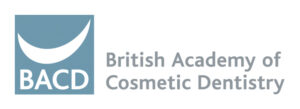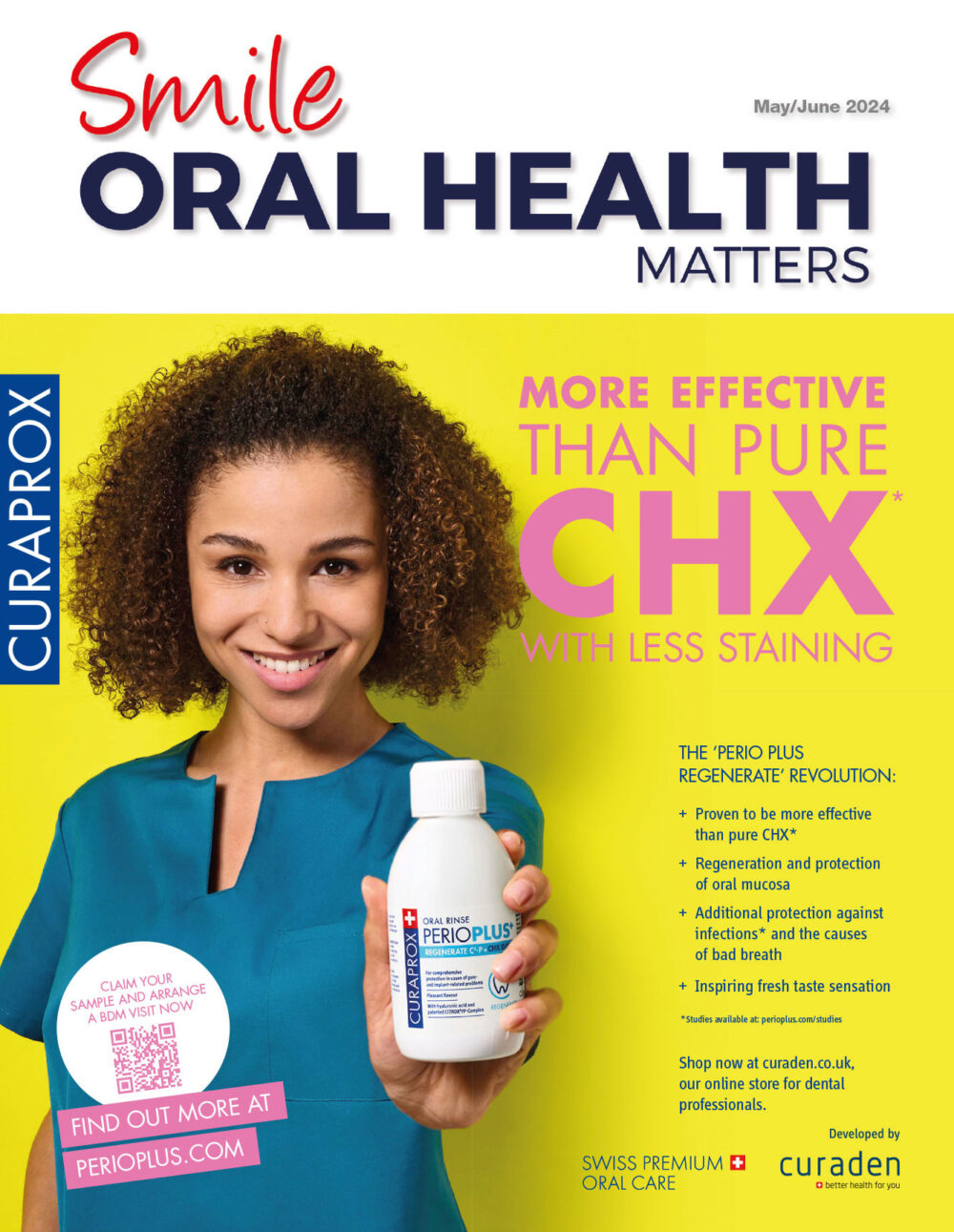Tooth wear can be identified in over 75% of adults and 50% of children in the UK.[i] Dental erosion works synergistically with attrition and abrasion to weaken tooth structure, affecting aesthetics, functionality and quality of life among those suffering from it.[ii] With life expectancy increasing, defending against the connected rise in tooth wear is now an urgent battle.
Dental erosion is a stealthy process and patients can be unaware of it occurring.[iii] It is therefore paramount for clinicians to identify dietary habits and medical complications in patients who are showing early signs of it, with a focus on controlling exposure to intrinsic and extrinsic acids before the risk worsens.
Fighting extrinsic acids
Understanding diet control is pivotal for patients to protect their teeth. Many food and drink items are acidic and demineralise enamel, thus increasing the sensitivity of effected teeth when brushing.[iv] Strong, non-bacterial acids are commonly found in sugary carbonated drinks and these are ill-advised to be swished or retained in the mouth.[v] Instead, they should be ideally consumed through a straw or with a meal to limit the damage.[vi]
Carbonated water may be more acidic than still water, but it is far less harmful than other fizzy drinks unless it has been artificially sweetened.[vii] Studies have shown that carbonated drinks with calcium ions can alleviate their erosive quality – these are therefore better options than sugary, fizzy drinks.[viii]
Fruits are highly acidic. Apples, berries and citrus fruits mostly harbour a pH in the 3.0-4.0 range and teeth erode at a pH of 2.0-4.0.[ix] However, the eating of fruit should not be discouraged, with government guidelines decreeing that the majority of children and adults do not currently consume enough to have a healthy diet.[x]
Among adults, the frequency and timing of acidic fruit consumption is significantly associated with dental erosion. A high consistency of snacking on fruit has been found to progress tooth wear, especially when compared to those who eat fruit with their meals.[xi] Instead of dissuading patients from eating fruit, promoting the consumption of acidic fruits with a meal is a more positive solution.
Defending against intrinsic acids
Some patients may be at a greater risk of tooth wear because of health complications. Frequent regurgitation of gastric contents can result in erosion, with stomach acid measuring a pH of 1.5-2.0.[xii] Tooth wear is common among people with gastroesophageal reflux disease (GERD).[xiii]
The growing number of patients with eating disorders are also at great risk: over 1.25 million people in the UK have an eating disorder, with 19% of cases being bulimia.[xiv] Vomiting affects the enamel in the oral cavity and the purgative subtype of bulimia has been connected to the erosion of the lingual surfaces of the maxillary teeth, with 90% of self-induced vomiting patients found to have had enamel erosion.[xv]
Many people immediately brush their teeth after vomiting, pushing non-bacterial stomach acids around and, through vigorous brushing, boosting the likelihood of abrasion too.[xvi] Clinicians can help lessen the risk of erosion by advising such patients on the benefits of using either water, an alkali substance like baking soda, or a fluoride mouthwash, to clean and rinse with first, and then to brush at least 30 minutes later to promote remineralisation of the teeth.[xvii]
Furthermore, 12.5% of 17 to 19-year-olds have an eating disorder. With rates among young women dramatically rising, so too will the interest in cosmetic surgery as tooth wear worsens.[xviii] Eating disorders can be difficult topics to discuss, so ensuring the dental practice has a positive atmosphere that promotes awareness of eating disorders can boost confidence in patients – doing so will better inform the dentist of the patient’s dietary habits and how to better manage them.[xix]
Forming an alliance
Tooth wear is becoming an ever-growing issue for dentists, and the problems caused by intrinsic and extrinsic acids is only one facet of the triple-pronged threat of erosion, abrasion and attrition. The British Academy of Cosmetic Dentistry (BACD) offers a vast range of education on tooth wear and many other crucial topics, sharing advice and solutions. The BACD 20th Annual Conference in November 2024 will mark 20 years of excellence and promises to be an educationally beneficial networking opportunity for all.
In order to reduce and treat tooth wear, it is essential for practitioners to know the dietary habits and medical complications of their patients so that the best advice can be given. Identifying and battling tooth wear early can ensure that patients can continue to feel good about smiling.

For further information and enquiries about the British Academy of Cosmetic Dentistry
visit www.bacd.com
[i] Folly, P. (2022). Tooth wear: An Authoritative Reference For Dental Professionals and Students (3rd edition). BDJ Student. doi:https://doi.org/10.1038/s41406-022-0333-8.
[ii] Sales-Peres, S.H. de C., Araújo, J.J., Marsicano, J.A., Santos, J.E. and Bastos, J.R.M. (2014). Prevalence, severity and etiology of dental wear in patients with eating disorders. European Journal of Dentistry, 08(01), pp.068–073. doi:https://doi.org/10.4103/1305-7456.126246.
[iii] Sales-Peres, S.H. de C., Araújo, J.J., Marsicano, J.A., Santos, J.E. and Bastos, J.R.M. (2014). Prevalence, severity and etiology of dental wear in patients with eating disorders. European Journal of Dentistry, 08(01), pp.068–073. doi:https://doi.org/10.4103/1305-7456.126246.
[iv] Kit, A., Yiu Cheung Tsang, Eddie Hsiang-Hua Lai and Chun Hung Chu (2024). Tooth Wear in Older Adults: A Review of Clinical Studies. Geriatrics, 9(1), pp.12–12. doi:https://doi.org/10.3390/geriatrics9010012.
[v] GOV.UK. (2021). Chapter 7: Tooth wear. [online] Available at: https://www.gov.uk/government/publications/delivering-better-oral-health-an-evidence-based-toolkit-for-prevention/chapter-7-tooth-wear
[vi] Kit, A., Yiu Cheung Tsang, Eddie Hsiang-Hua Lai and Chun Hung Chu (2024). Tooth Wear in Older Adults: A Review of Clinical Studies. Geriatrics, 9(1), pp.12–12. doi:https://doi.org/10.3390/geriatrics9010012.
[vii] GOV.UK. (2021). Chapter 7: Tooth wear. [online] Available at: https://www.gov.uk/government/publications/delivering-better-oral-health-an-evidence-based-toolkit-for-prevention/chapter-7-tooth-wear.
[viii] Ryu, H., Kim, Y., Heo, S. and Kim, S. (2018). Effect of carbonated water manufactured by a soda carbonator on etched or sealed enamel. The Korean Journal of Orthodontics, 48(1), p.48. doi:https://doi.org/10.4041/kjod.2018.48.1.48.
[ix]www.pickyourown.org. (n.d.). pH of Fresh Fruits – Master List. [online] Available at: https://www.pickyourown.org/pH-of-fresh-fruits.php.
Kit, A., Yiu Cheung Tsang, Eddie Hsiang-Hua Lai and Chun Hung Chu (2024). Tooth Wear in Older Adults: A Review of Clinical Studies. Geriatrics, 9(1), pp.12–12. doi:https://doi.org/10.3390/geriatrics9010012.
[x] GOV.UK. (2021). Chapter 7: Tooth wear. [online] Available at: https://www.gov.uk/government/publications/delivering-better-oral-health-an-evidence-based-toolkit-for-prevention/chapter-7-tooth-wear.
[xi] Kit, A., Yiu Cheung Tsang, Eddie Hsiang-Hua Lai and Chun Hung Chu (2024). Tooth Wear in Older Adults: A Review of Clinical Studies. Geriatrics, 9(1), pp.12–12. doi:https://doi.org/10.3390/geriatrics9010012.
[xii] Fujimori, S. (2020). Gastric acid level of humans must decrease in the future. World Journal of Gastroenterology, [online] 26(43), pp.6706–6709. doi:https://doi.org/10.3748/wjg.v26.i43.6706.
[xiii] Kit, A., Yiu Cheung Tsang, Eddie Hsiang-Hua Lai and Chun Hung Chu (2024). Tooth Wear in Older Adults: A Review of Clinical Studies. Geriatrics, 9(1), pp.12–12. doi:https://doi.org/10.3390/geriatrics9010012.
[xiv] Beat (2021). Statistics for Journalists. [online] Beat. Available at: https://www.beateatingdisorders.org.uk/media-centre/eating-disorder-statistics/.
[xv] Sales-Peres, S.H. de C., Araújo, J.J., Marsicano, J.A., Santos, J.E. and Bastos, J.R.M. (2014). Prevalence, severity and etiology of dental wear in patients with eating disorders. European Journal of Dentistry, 08(01), pp.068–073. doi:https://doi.org/10.4103/1305-7456.126246.
Uhlen, M.-M., Tveit, A.B., Refsholt Stenhagen, K. and Mulic, A. (2014). Self-induced vomiting and dental erosion – a clinical study. BMC Oral Health, [online] 14(1). doi:https://doi.org/10.1186/1472-6831-14-92.
[xvi] Conviser, J.H., Fisher, S.D. and Mitchell, K.B. (2014). Oral care behavior after purging in a sample of women with bulimia nervosa. The Journal of the American Dental Association, 145(4), pp.352–354. doi:https://doi.org/10.14219/jada.2014.5.
[xvii] marketingteam (2015). How to Protect Your Teeth from Frequent Vomiting | Dr. Jamie Sands. [online] Jamie Sands | Studio City Cosmetic Dentist. Available at: https://www.drjamiesands.com/how-to-protect-your-teeth-from-frequent-vomiting/.
Oral Health Foundation. (n.d.). Dental teams can be ‘vital link’ in caring for patients with eating disorders, says charity. [online] Available at: https://www.dentalhealth.org/news/dental-teams-can-be-vital-link-in-caring-for-patients-with-eating-disorders-says-charity.
[xviii] www.england.nhs.uk. (n.d.). NHS England» One in five children and young people had a probable mental disorder in 2023. [online] Available at: https://www.england.nhs.uk/2023/11/one-in-five-children-and-young-people-had-a-probable-mental-disorder-in-2023/#:~:text=In%202023%2C%2012.5%25%20of%2017.
[xix] Uhlen, M.-M., Tveit, A.B., Refsholt Stenhagen, K. and Mulic, A. (2014). Self-induced vomiting and dental erosion – a clinical study. BMC Oral Health, [online] 14(1). doi:https://doi.org/10.1186/1472-6831-14-92.












